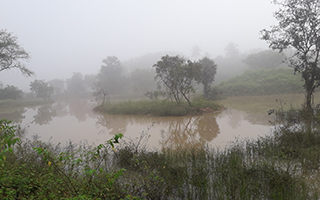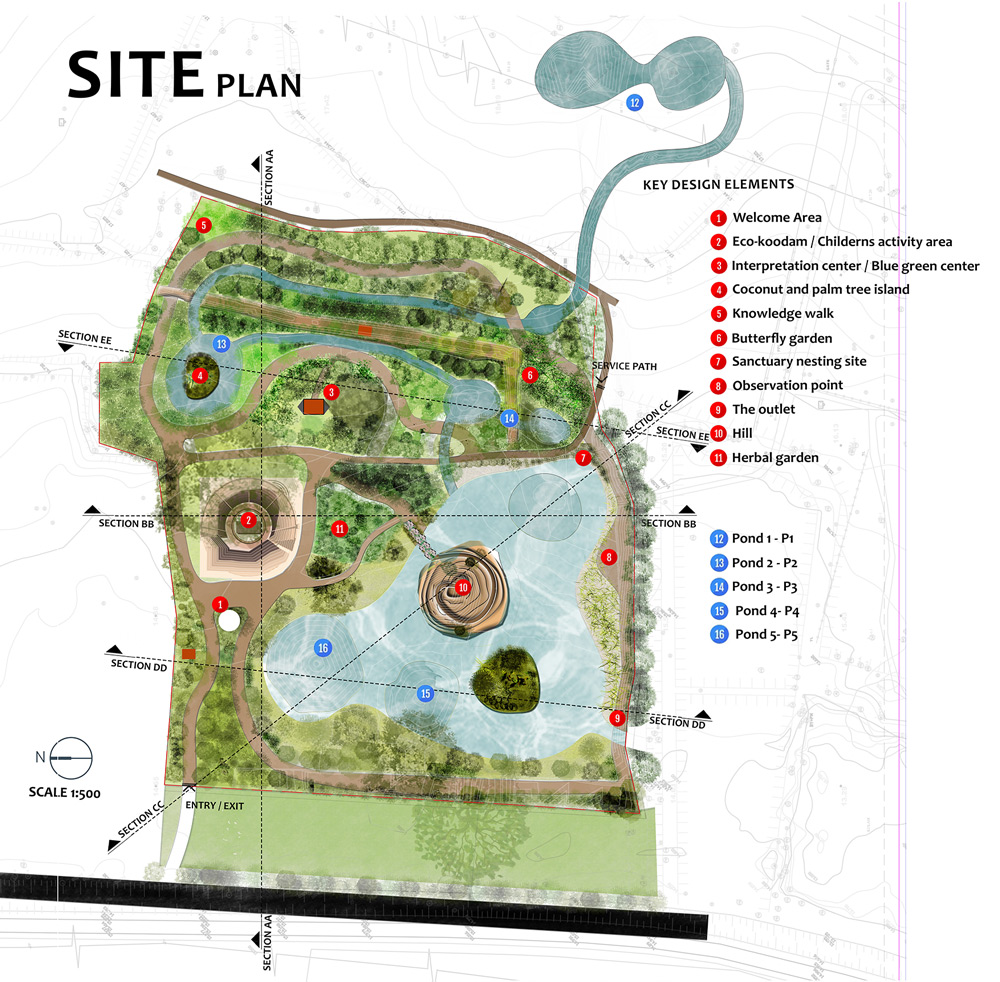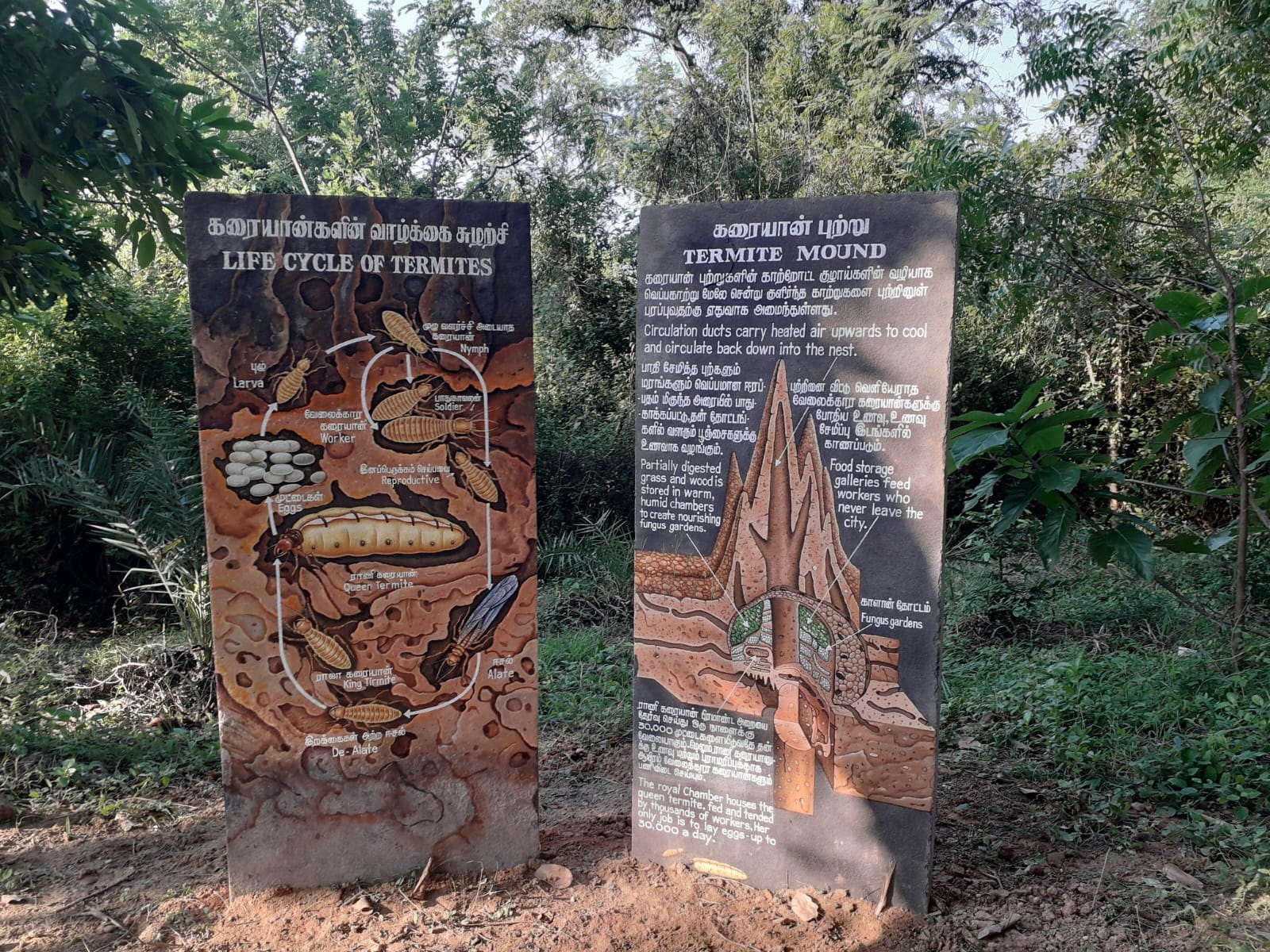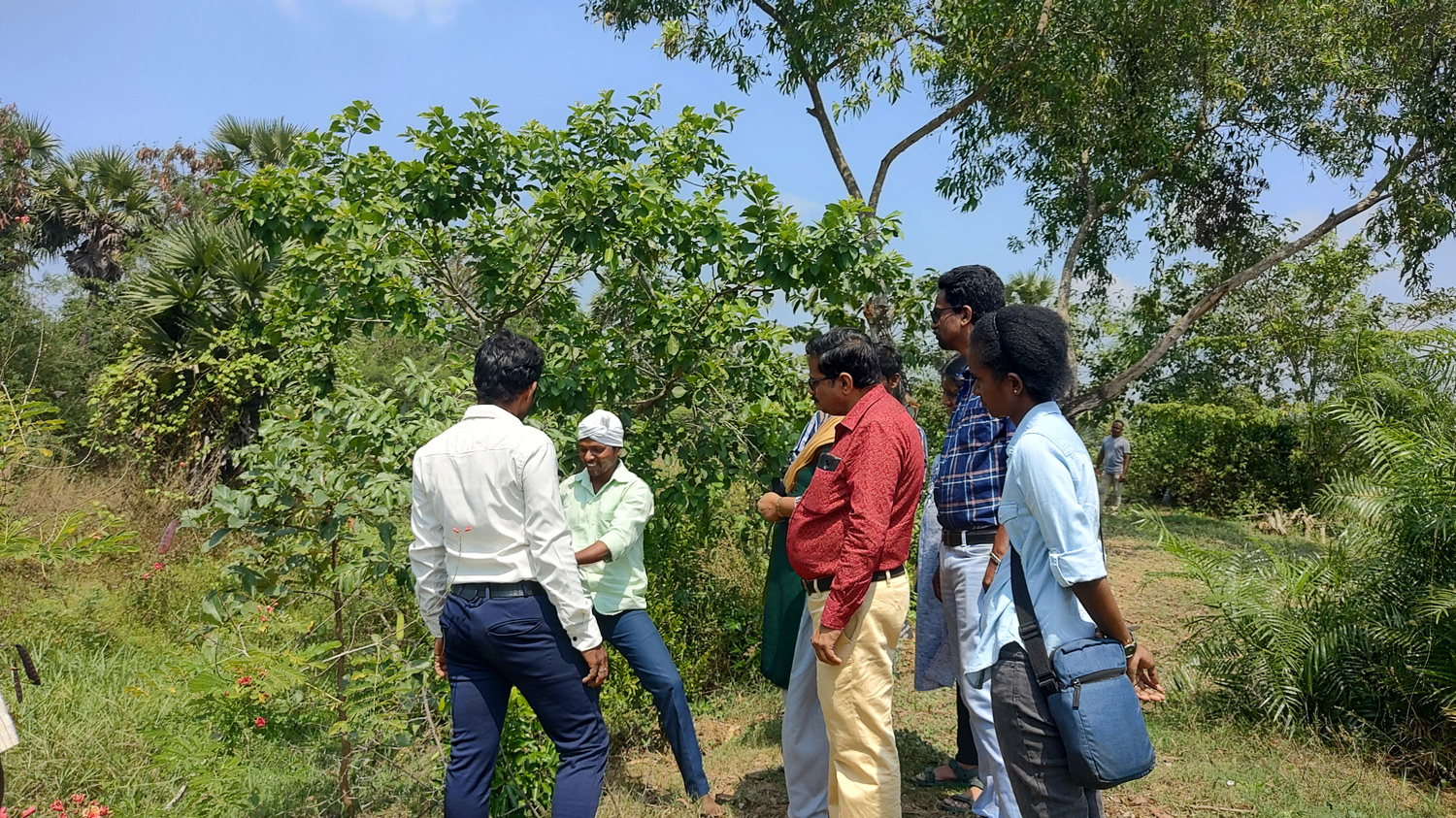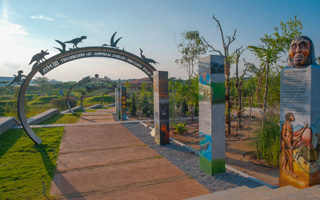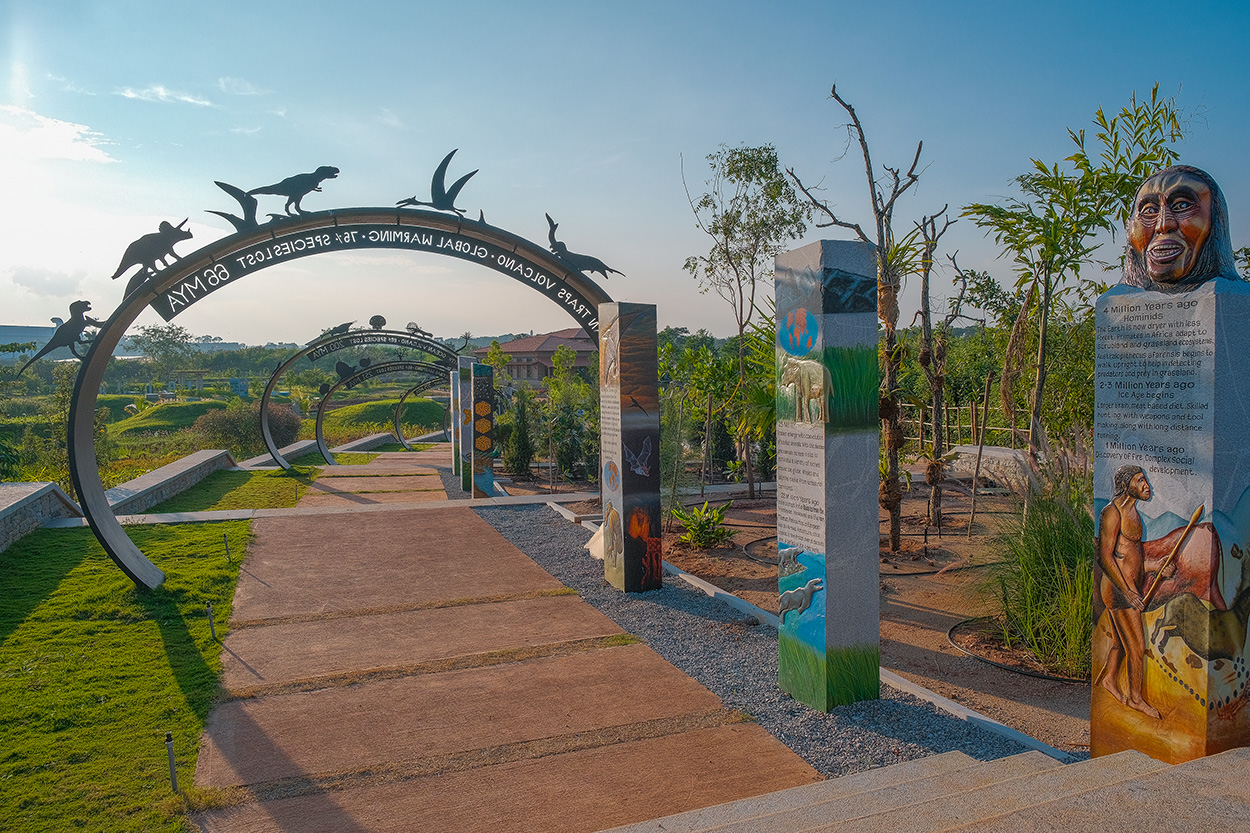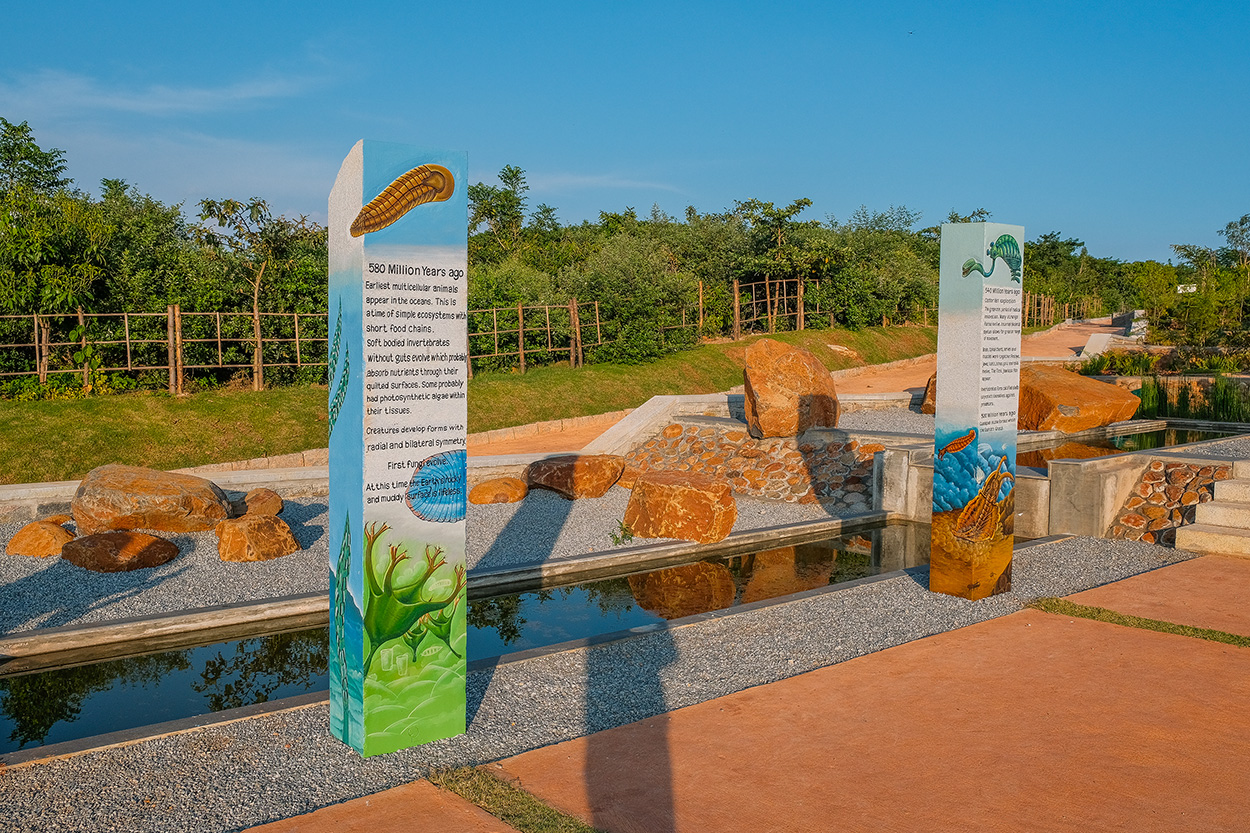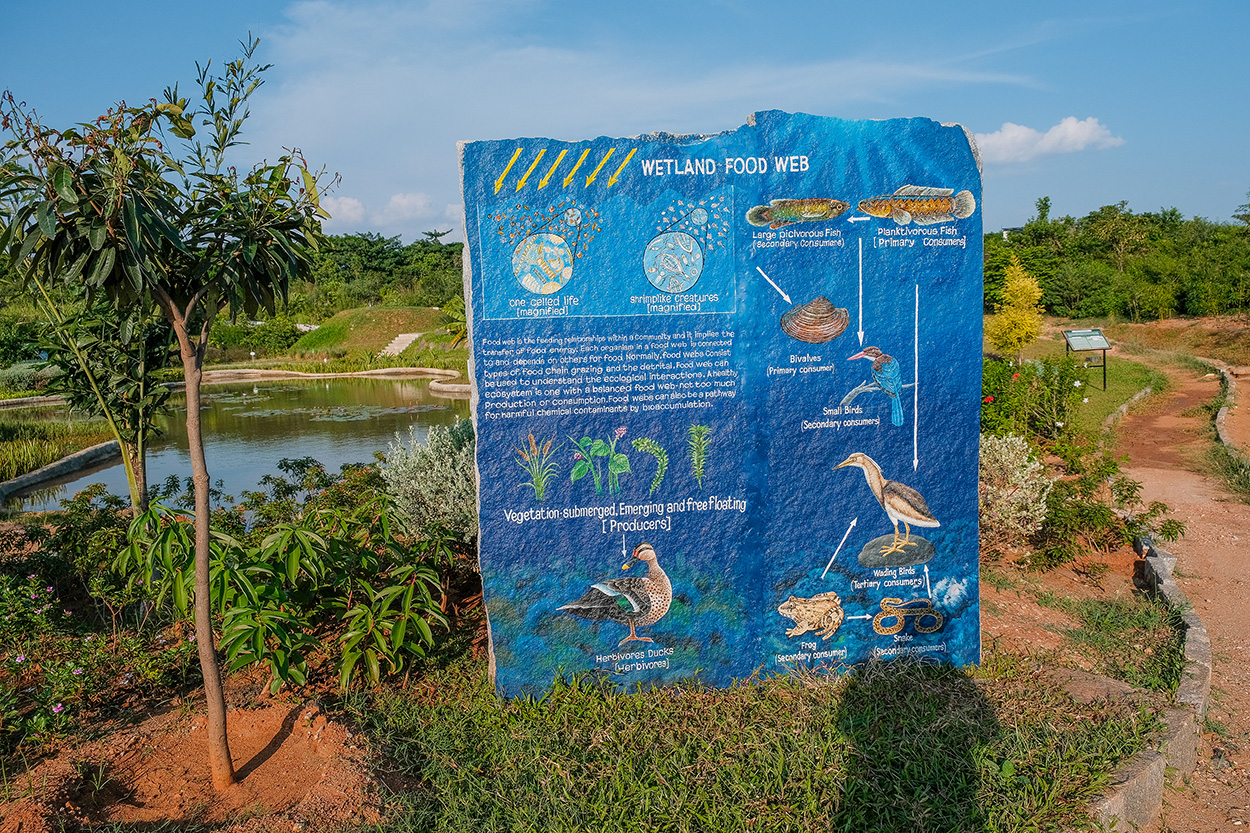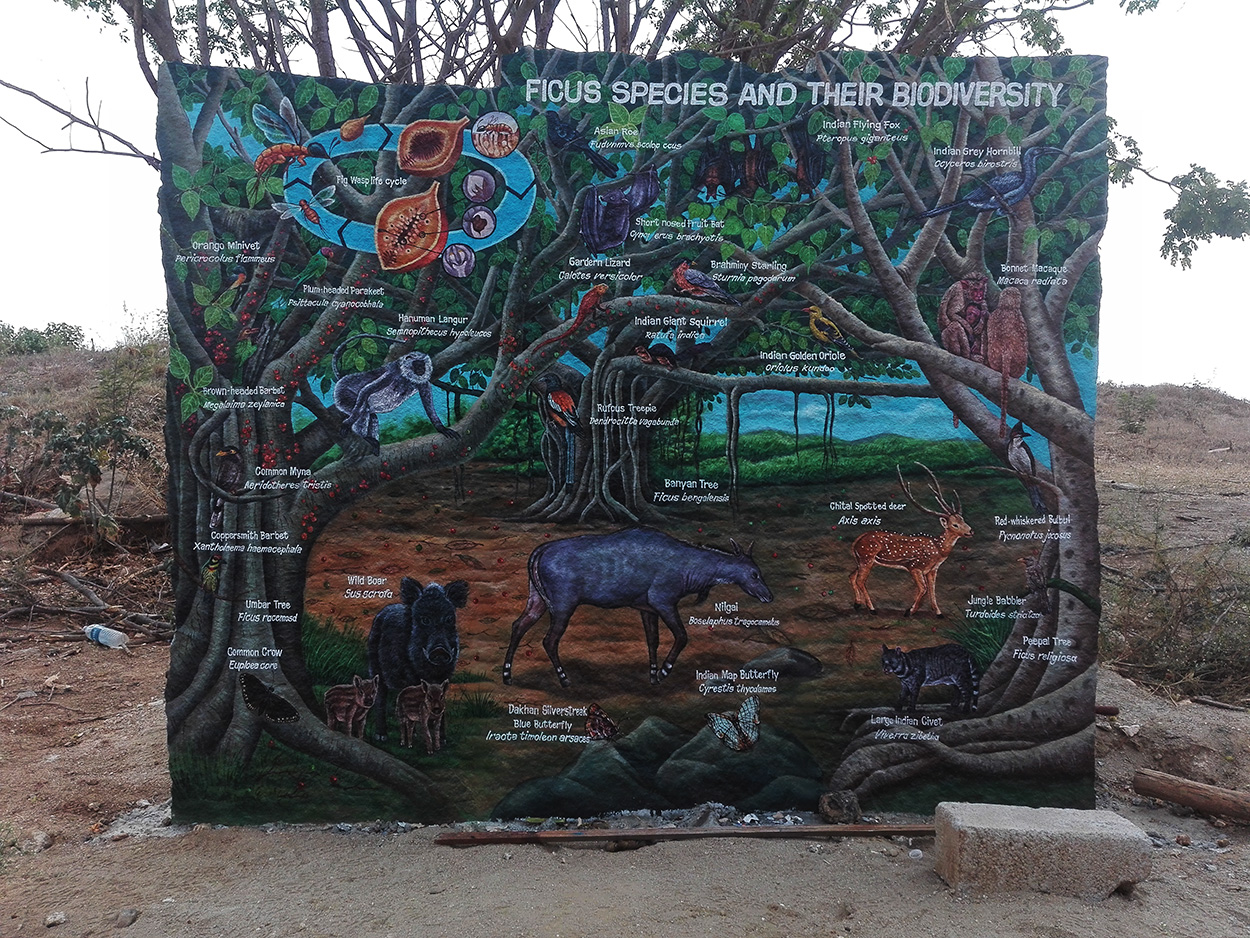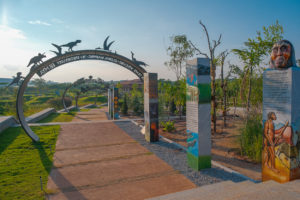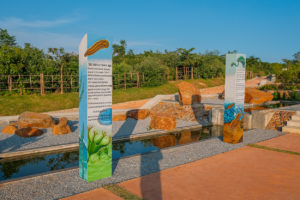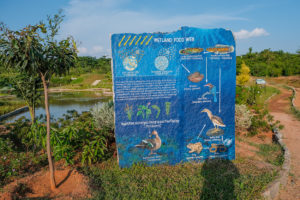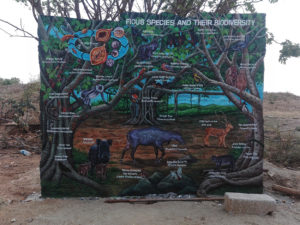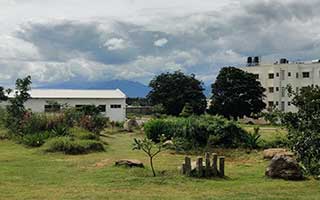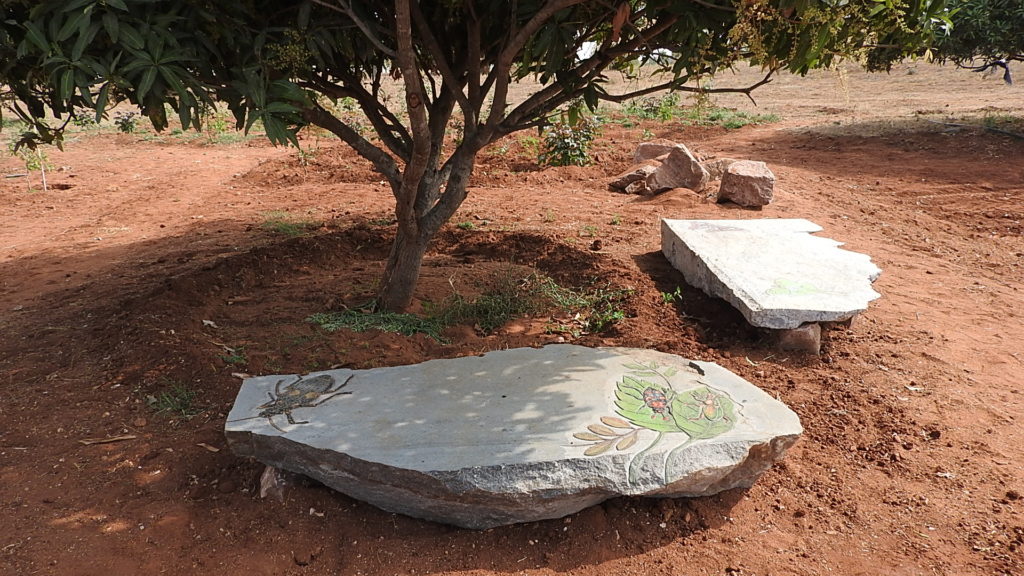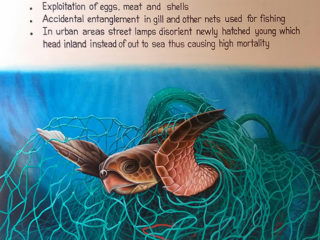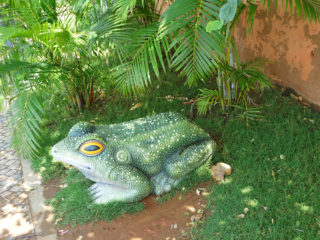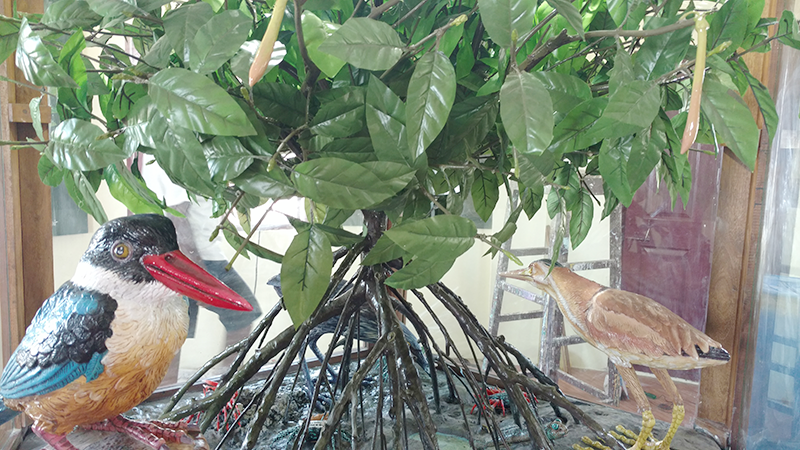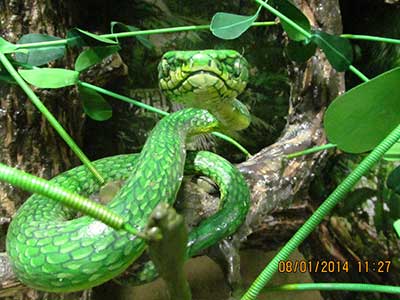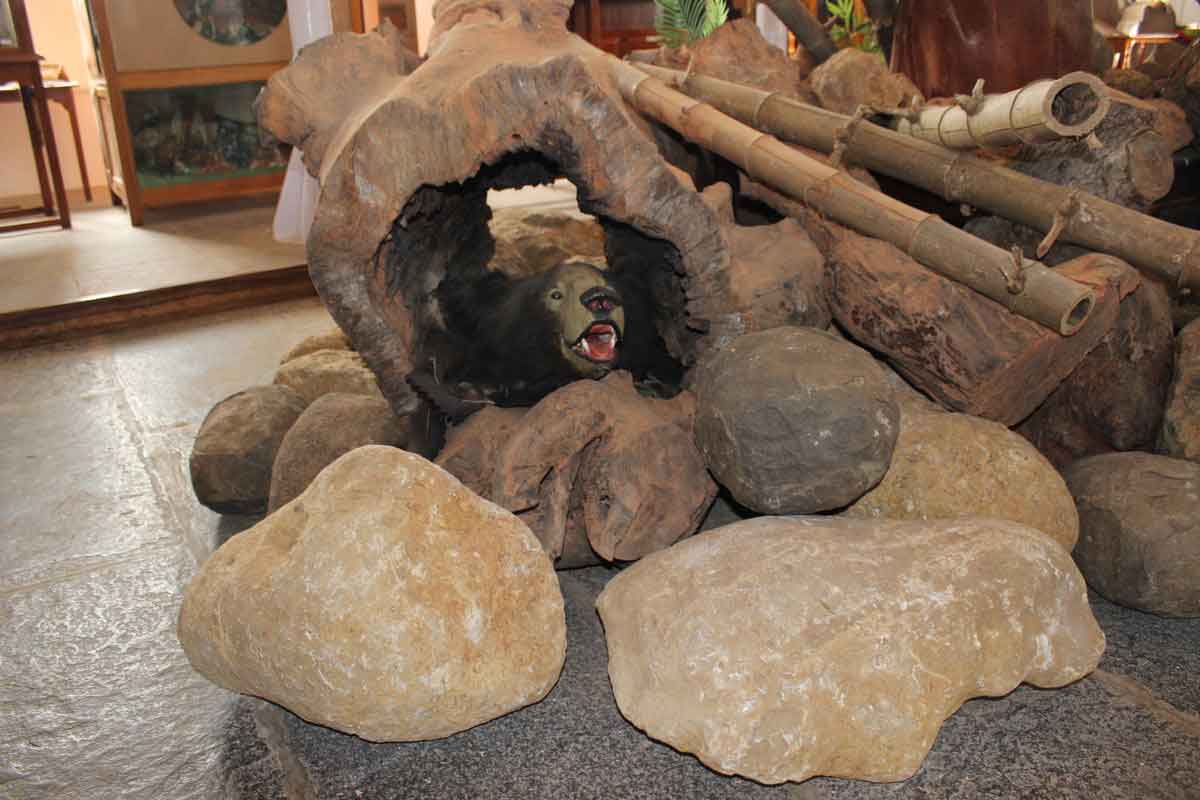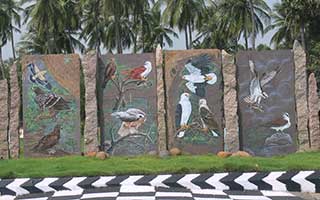Aurovanam – Nature Lab Pondicherry
Aurovanam stands as a collaboration between the Sri Aurobindo Society and the PFC giving birth to a Nature Lab that spans 5.6 acres within the scenic expanse of the Matrikunj estate. Nestled on the fringes of the revered Ousteri Lake in Pondicherry, this venture holds national significance as an Important Bird Area (BNHS) and also wears the badge of a heritage site (IUCN). The unique ecological tapestry here owes its vibrancy to the yearly hydrological oscillations it experiences.
The foundational stride in this journey was the ecological revival of the Matrikunj estate, once a canvas for the Sri Aurobindo Society’s grassroots education on natural farming, herbal medicine, and seed preservation. Prioritizing the reclamation of an ecologically harmonious and biodiverse landscape was pivotal to bolster the Ousteri Lake’s delicate ecosystem. An exhaustive survey of the faunal and floral biodiversity paved the way to recognize native species and devise restoration strategies.
The prelude to planting involved meticulous landscaping for optimal water retention, The landscape welcomed the cautious integration of the Tropical Dry Evergreen Forest (TDEF), underscoring a connection to the indigenous environment. In homage to the traditional eris of South India, water bodies were sculpted to emulate the reservoirs, ponds, and aqueducts that usher water to grander bodies. Today, Aurovanam stands as a tenacious, self-sustaining microcosm featuring diverse ecosystems – from wetlands to TDEF sacred groves, harmoniously interwoven with water bodies.
With the ecological revival complete, the focus shifted to nurturing connections between visitors and the burgeoning ecosystem, giving birth to the Nature Lab. A pivotal facet of this endeavor is the Nature Trail, an immersive educational pathway tailored to enrich the understanding of children through direct engagement with nature. This initiative aspires to foster profound bonds between the young and their environment. The expanse boasts themed gardens, celebrating elements like mythology and herbal medicine, alongside attractions such as nesting sites, children’s activity zones, and the innovative blue green center.
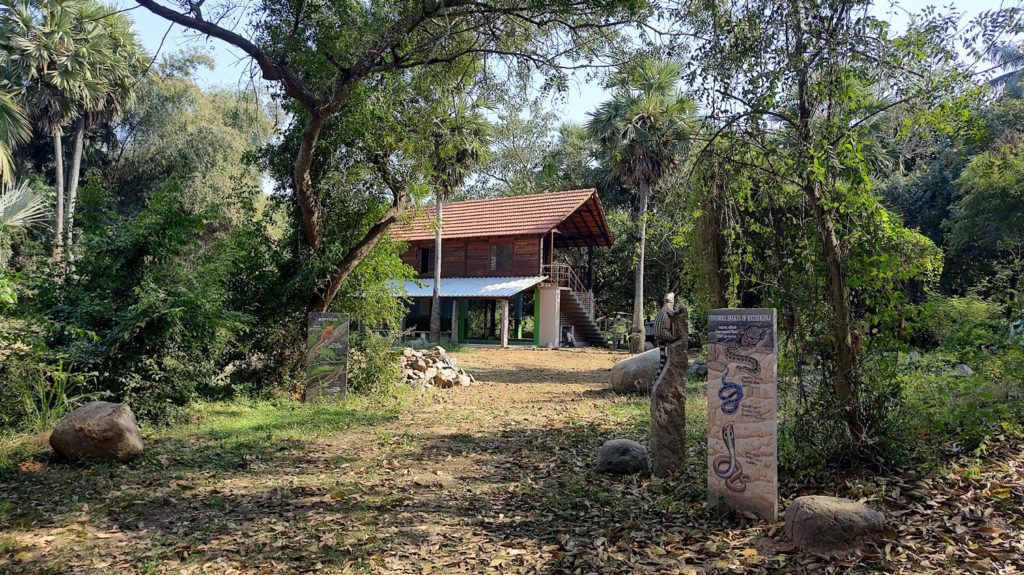
The blue green center, doubling as an interpretation hub, serves as an avenue for teaching and demonstrating the ethos of the project. Aurovanam sets its sights on becoming a beacon of sustainability, scalability, and replication. The project’s nursery, an integral component, provides a repository of rare and exotic plant species, nourishing the aspirations of those eager to cultivate similar Nature Trails.
The blue green center, doubling as an interpretation hub, serves as an avenue for teaching and demonstrating the ethos of the project. Aurovanam sets its sights on becoming a beacon of sustainability, scalability, and replication. The project’s nursery, an integral component, provides a repository of rare and exotic plant species, nourishing the aspirations of those eager to cultivate similar Nature Trails.
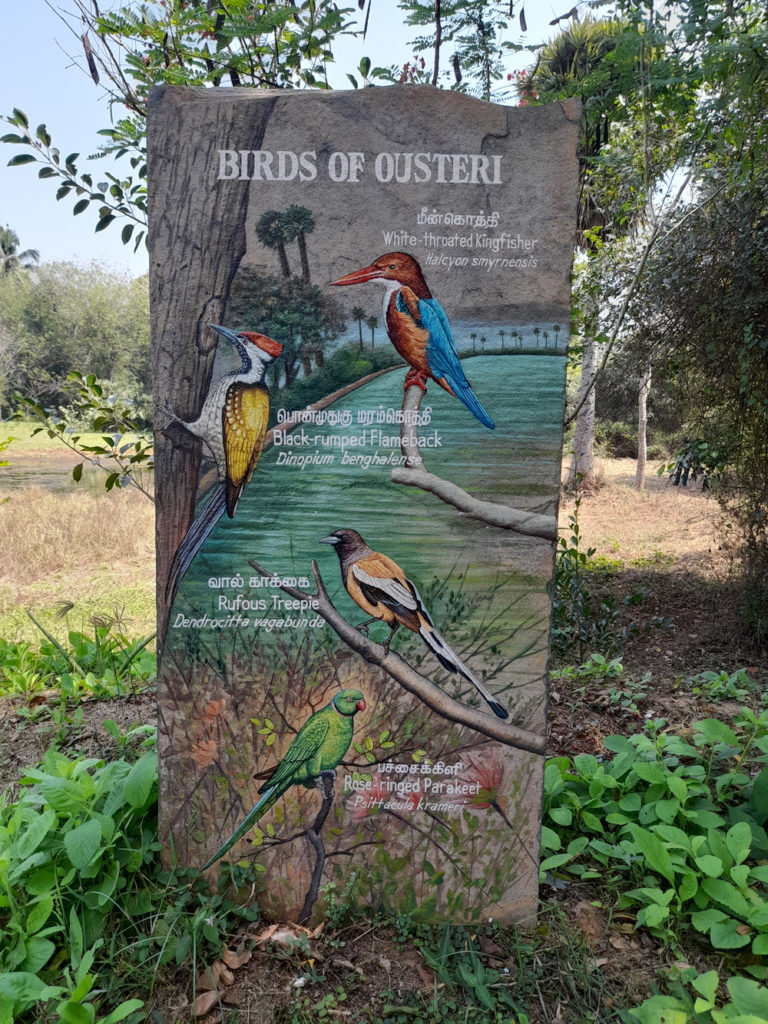

In essence, Aurovanam isn’t just a Nature Lab; it’s an embodiment of harmonious coexistence, ecological reverence, and experiential learning. Its presence radiates the potential to spark similar green initiatives across India, rekindling the relationship between humanity and nature for generations to come.
TOYOTA KIRLOSKAR MOTORS (TKM)
TKM has a very impressive factory laid out over 500 acres at Bidadi industrial area along the Bangalore – Mysore Highway. Here 25 acres have been set aside as an ECOZONE principally to sensitise employees of TKM and other corporates in Bidadi, their families and children from surrounding schools about environmental and conservation issues. PFC was contracted to execute the Artwork for the site which involved interpretation signage, carving and painting gigantic pillars for a timeline walk, 3D carvings of keystone animal species, 2D carving on boulders depicting endangered plant species and artistically designed mosaic seating. This venture has been very rewarding and it was a pleasure to be appreciated by the top executives and CEOs of Toyota, many of whom had flown down from Japan to attend the opening ceremony of the park.
D.J. Academy, Coimbatore
D.J. Academy in Coimbatore was a barren land. The main focus of the work here was shaping and planting an area of 25 acres and particularly creating water retention landscapes.
Marine Turtle Centre

The Turtle Interpretation Centre at Marakkanam is a project undertaken at the behest of the Department of Forest and Wildlife, Tamil Nadu. The centre has interpretation signage on plywood that combines both text and imagery concerning sea turtles found in India, especially the Olive Ridley Turtle which inhabits coastal waters of the East Coast of India.
Chetpet Eco Park, Chennai
This was a project initiated by the Fisheries Department of Tamil Nadu which PFC facilitated in the beginning. Later during the execution phase the contractor involved PFC to create sculptures of creatures in stone, ferrocement and metal.

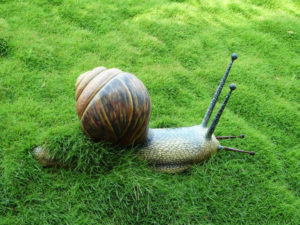
Pitchavarm Mangrove Forest
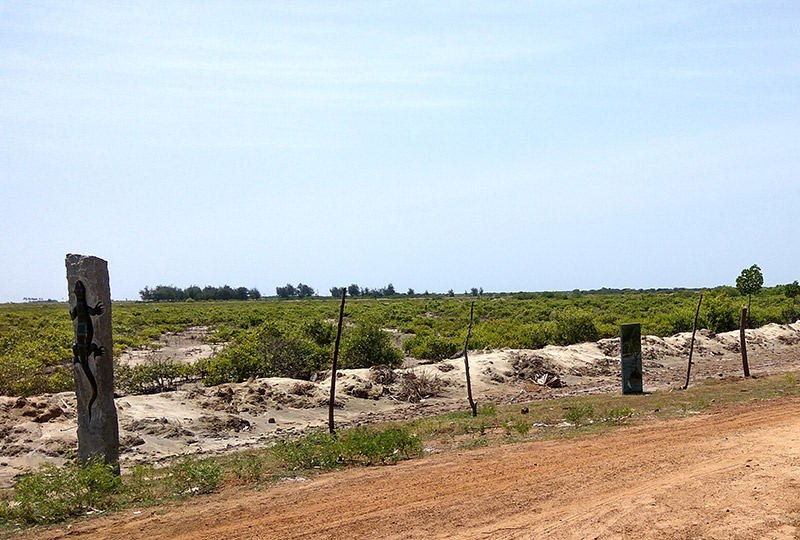 Home to one of India’s largest and most important mangrove ecosystems, Pichavaram in the Cuddalore district of Tamil Nadu has long mesmerised visitors with its spectacular maze of narrow waterways and overhanging mangroves.
Home to one of India’s largest and most important mangrove ecosystems, Pichavaram in the Cuddalore district of Tamil Nadu has long mesmerised visitors with its spectacular maze of narrow waterways and overhanging mangroves.
The art department at Pitchandikulam is delighted to have helped design and create an interpretation centre on the site, on commission from the Tamil Nadu Forest Department.
The project consisted of two parts:
- an interpretation centre, with over a dozen artworks and a permanent exhibition on the biodiversity of the mangrove ecosystem
- a nature trail aimed at schoolchildren and tourists with nine carved stone pillars and seven kadappu stone slabs with oil paintings and information on local birds, marine life and distinctive botanical features such as the Rhizophora species of mangrove trees.
Over a dozen artworks were made for the mangrove interpretation centre, including a beautiful sea turtle who now takes pride of place hanging from the ceiling, and a complex five foot painted sculpture of a rhizophora mangrove tree, complete with roots.
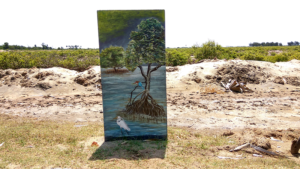
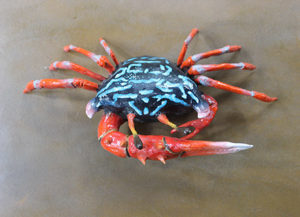

Department of Forests and Wildlife, Puducherry
This involved showcasing the four common venomous snakes of peninsular India (Spectacled Cobra, Indian Krait, Russell’s Viper and Saw-Scaled Viper) and their likeness for the education of the general public. We created life sized sculptures of nine snakes for an outdoor public space, in addition to interpretative signage.




Snake Park, Chennai
 This project involved the creation of life sized models of various snakes and lizards.The challenge was to be as taxonomically accurate as possible as the models had to undergo scrutiny by top herpetologists and other wildlife biologists. In addition the models had to depict life styles of the animals that one would not observe unless one spent considerable time observing them in the wild. This was one of Pitchandikulam’s most satisfying projects as it passed muster in both the strict scientific as well as the art fields.
This project involved the creation of life sized models of various snakes and lizards.The challenge was to be as taxonomically accurate as possible as the models had to undergo scrutiny by top herpetologists and other wildlife biologists. In addition the models had to depict life styles of the animals that one would not observe unless one spent considerable time observing them in the wild. This was one of Pitchandikulam’s most satisfying projects as it passed muster in both the strict scientific as well as the art fields.


Gass Forest Museum, Coimbatore

This is one of the oldest museums in the country. We were commissioned to refurbish the museum and give it a more aesthetically appealing look without compromising the existing collections in the museum. The work needed quite a bit of ingenuity and involved the creation of life-sized sculptures of large animals, interpretative signage, indoor landscaping, refurbishing of antique furniture and models, and the cleaning and remounting of the hundreds of animal trophies and skins contained in the collection.
The highlight of the exhibition space is a three dimensional diorama, approximately 25m x 3m, of a rocky forest landscape complete with sculptures of a tiger, a family of lion-tailed macaques, an Indian python swallowing a spotted deer, a king cobra, and a ficus tree amongst many other minor items. A stuffed gaur (Indian bison), presented by the Maharaja of Mysore, and a few other fully stuffed specimens were also used to give a realistic feel to the exhibition.
There’s a good article from the Hindu on the reopening of the museum here.




Toll plazas along the ECR from Chennai to Puducherry

Eye catching paintings of local wildlife on Kadappa stone were erected at both tollgates between Chennai and Puducherry, along the East Coast Road (ECR).
Maintenance update: A few of the paintings have faded noticeably since they have no shade and have not been touched up since they were commissioned nine years ago.
Customers and fans of outdoor art please note: if artworks are left out in direct sunlight, the colours will fade, so repainting maintenance should ideally be undertaken every three years or so. Therefore, it is most economical not to place the art in direct sunlight without any kind of shade.


